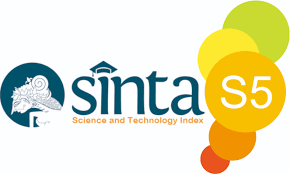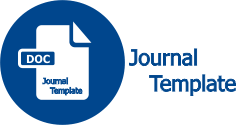Klasifikasi Kematangan Buah Pepaya Berdasarkan Fitur Warna Menggunakan Metode SVM
Abstract
Keywords
Full Text:
PDFReferences
M. Arief, “Klasifikasi Kematangan Buah Jeruk Berdasarkan Fitur Warna Menggunakan Metode SVM,” Jurnal Ilmu Komputer dan Desain Komunikasi Visual, vol. 4, no. 1, pp. 9–16, 2019.
E. Dwianto and M. Sadikin, “Analisis Sentimen Transportasi Online pada Twitter Menggunakan Metode Klasifikasi Naïve Bayes dan Support Vector Machine,” 2021.
M. Andrea Rossi et al., “Estimasi Nilai Akhir Mata Pelajaran Komputer dan Jaringan Dasar Menggunakan Algoritma Linear Regression Berganda,” 2023.
S. Y. Putra, I. Agus, S. Fakultas, T. Informasi, and U. N. Mandiri, “Optimalisasi Overload Traffic dan Request Cloud Environment Menggunakan Metode Content Delivery Network dan Private Zone Di RCTI+,” 2023.
A. A. Permana and A. B. Prakoso, “Perancangan Sistem Informasi Antrian Jasa Service Menggunakan Metode Iteratif Berbasis Website,” 2022.
P. A. Y. W. S. I wayan Suartika E, “Klasifikasi Citra Menggunakan Convolutional Neural Network (Cnn) pada Caltech 101,” Klasifikasi Citra Menggunakan Convolutional Neural Network (Cnn) pada Caltech 101, vol. 5, pp. 65–69, 2016.
J. Homepage, K. Buah Segar dan Busuk Menggunakan Ekstraksi Fitur Hu-Moment, H. dan Histogram Fani Nurona Cahya, R. Pebrianto, and T. M. Adilah, “IJCIT (Indonesian Journal on Computer and Information Technology),” 2021.
Y. W. Pamungkas, A. Adiwijaya, and D. Q. Utama, “Klasifikasi Gambar Gigitan Ular Menggunakan Regionprops dan Algoritma Decision Tree,” Jurnal Sistem Komputer dan Informatika (JSON), vol. 1, no. 2, p. 69, Jan. 2020, doi: 10.30865/json.v1i2.1789.
P. Rosyani, S. Saprudin, and R. Amalia, “Klasifikasi Citra Menggunakan Metode Random Forest dan Sequential Minimal Optimization (SMO),” Jurnal Sistem dan Teknologi Informasi (Justin), vol. 9, no. 2, pp. 132–134, Apr. 2021, doi: 10.26418/justin.v9i2.44120.
S. Informasi et al., “Sistem Informasi Aplikasi Kasir Pada Koperasi RSCM Jakarta Pusat Berbasis Java,” vol.11, no.2, pp. 176-183, 2022.
J. Januraga et al., “Mendeteksi Keamanan Website SMP Negeri 1 Blahbatuh Menggunakan Metode Open Web Application Security Project (OWASP) Versi 2.11: XSS & Rate Limiting 1 I Made Agus,” vol.11, no.2 , pp. 137-144, 2022.
DOI: http://dx.doi.org/10.22441/format.2024.v13.i1.006
Refbacks
- There are currently no refbacks.
Copyright (c) 2024 Format : Jurnal Ilmiah Teknik Informatika

This work is licensed under a Creative Commons Attribution-NonCommercial-NoDerivatives 4.0 International License.
Format : Jurnal Ilmiah Teknik Informatika
Fakultas Ilmu Komputer Universitas Mercu Buana
Jl. Raya Meruya Selatan, Kembangan, Jakarta 11650
Tlp./Fax: +62215840816
http://publikasi.mercubuana.ac.id/index.php/format

|

Ciptaan disebarluaskan di bawah Lisensi Creative Commons Atribusi-NonKomersial 4.0 Internasional.











